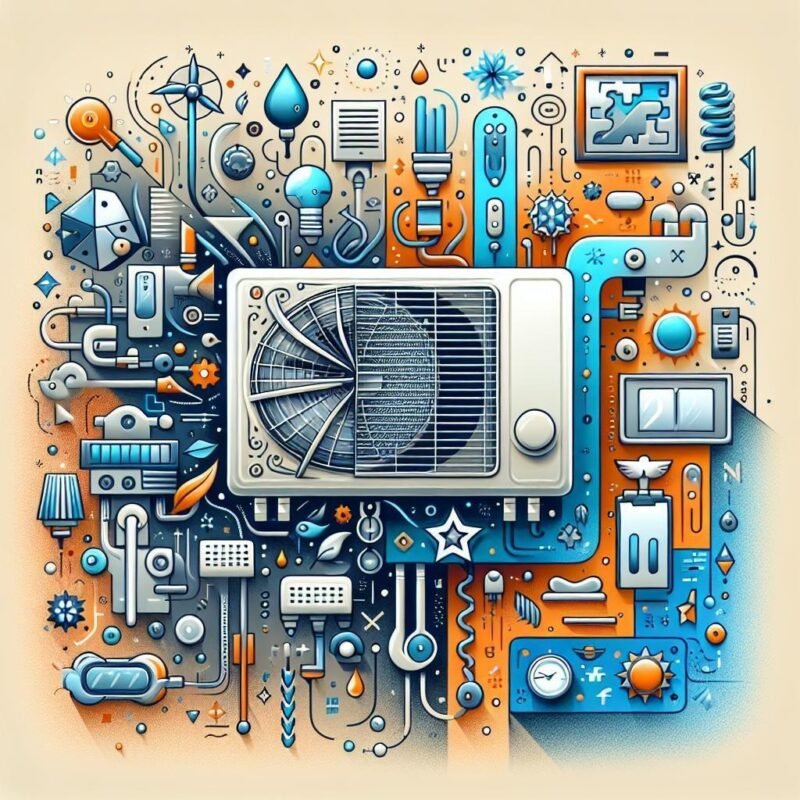What is the payback period for installing a mini split AC system?

Tired of sweating through those scorching summer days, but worried about the dent a mini split AC might leave in your wallet? You’re not alone! As homeowners increasingly turn to these sleek, energy-efficient cooling solutions, one burning question remains: how long until your investment starts paying for itself? Let’s dive into the world of mini split systems and uncover the sweet spot where comfort meets cost-effectiveness – because who doesn’t love a good return on investment story that keeps you cool and collected?
Breaking Down Mini Split AC Installation Costs and time to Recoup Your investment
Installing a snazzy mini split AC system typically costs between $2,000 to $8,000, depending on factors like system size, complexity, and local labor rates. Professional installation makes up about 30% of the total cost, but don’t let that scare you away! The real magic happens when you look at the potential energy savings compared to traditional HVAC systems. Moast homeowners report monthly electricity bill reductions of 20-40% after making the switch, which can translate to hundreds of dollars saved annually.
To determine when your investment will pay for itself, consider these key factors:
- Current monthly cooling costs
- Local electricity rates
- Seasonal usage patterns
- Number of zones being cooled
| System Size | Average Cost | Annual Savings | Typical Payback |
|---|---|---|---|
| 12,000 BTU | $3,000 | $500 | 6 years |
| 24,000 BTU | $5,000 | $800 | 6.2 years |
| 36,000 BTU | $7,000 | $1,100 | 6.4 years |
Energy Savings and Monthly Bill Reductions: Why Mini Splits Pay for Themselves
The true beauty of mini split systems lies in their remarkable ability to slash your utility expenses month after month. These efficient powerhouses typically use up to 30% less electricity than traditional HVAC setups, translating into significant savings that can range from $300 to $1,200 annually, depending on your climate and usage patterns. Modern inverter technology allows these systems to maintain precise temperature control while operating at variable speeds, eliminating the energy-wasteful on-off cycling of conventional units.
Let’s break down the impressive cost benefits that make these systems a smart investment:
- Zone-based cooling/heating eliminates wasted energy in unused rooms
- No ductwork means zero energy loss through leaky ducts
- advanced sensors prevent temperature overshooting
- Smart scheduling features optimize runtime efficiency
| System Type | Annual Energy Cost | 10-Year Savings |
|---|---|---|
| Traditional AC | $1,200 | $0 |
| Mini Split | $840 | $3,600 |
Hidden Financial Benefits and Tax Incentives That Speed Up your Payback timeline
beyond the immediate savings on your energy bills, mini split installations can unlock several financial perks that many homeowners overlook. The federal government offers a substantial tax credit of up to 30% through the Energy Efficient Home Betterment Credit, substantially reducing your initial investment. local utility companies frequently provide rebates and incentives for choosing energy-efficient HVAC solutions, while some states offer additional tax deductions that can stack with federal benefits.
Smart financing options and seasonal promotions can further accelerate your return on investment. Consider these lesser-known opportunities:
- Energy-efficiency mortgage programs that bundle installation costs into your home loan
- Performance-based incentives that pay you for reduced energy consumption
- Property tax exemptions for green home improvements
- Manufacturer rebates and extended warranty promotions
| Incentive Type | Potential Savings |
|---|---|
| Federal Tax Credit | Up to $2,000 |
| Utility Rebates | $300-$1,000 |
| State Programs | $500-$1,500 |
Smart Tips to Maximize Your Mini Split ROI and Reduce the Break-Even Point
Consider installing your ductless mini split system during off-peak seasons when contractors offer competitive rates and promotions. Timing your purchase strategically can save up to 30% on installation costs. Additionally, take advantage of available tax credits, utility rebates, and manufacturer incentives that can significantly offset your initial investment. Research local energy-efficiency programs and combine multiple incentives to maximize savings.
optimize your system’s performance and longevity with these money-saving practices:
- Clean or replace filters monthly to maintain optimal airflow
- Schedule bi-annual professional maintenance checks
- Use programmable settings to reduce energy consumption when away
- Install a smart thermostat for precise temperature control
- Seal windows and improve insulation to reduce system workload
| Maintenance Task | Cost Impact |
|---|---|
| Regular Filter Cleaning | 15% savings |
| Professional tune-up | 20% savings |
| Smart Controls | 25% savings |
Q&A
Q: What exactly is a payback period when it comes to installing a mini-split AC system?
A: Great question! The payback period refers to the amount of time it takes for the energy savings generated by your mini-split air conditioning system to equal the initial investment you made to install it. Think of it as the time it takes for your wallet to say, ”Thank you!” after spending on a cool new addition to your home.
Q: Why should I consider a mini-split AC system in the first place?
A: Mini-split AC systems are like the Swiss Army knives of cooling! They offer energy efficiency, versatility, and quiet operation. Plus, they allow for zone cooling, meaning you can keep specific rooms cool without having to chill the entire house. It’s a win-win for comfort and efficiency!
Q: How do I calculate the payback period for my mini-split AC installation?
A: Calculating the payback period is simpler than it sounds! Start by determining the total cost of the mini-split installation, including units, labor, and any additional equipment. Then, estimate your average monthly energy savings by comparing your current cooling costs to what you anticipate spending with the mini-split. Divide the total installation cost by those monthly savings, and voila! You’ve got your payback period in months.
Q: What factors can influence my payback period?
A: Several factors play a role in determining the payback period, including the installation cost, the efficiency of the unit you choose, local energy rates, and your current cooling expenses. If you often crank up the AC, a mini-split might offer significant savings, shortening that payback period.Additionally, if your area has hot summers, the payback period can become even more favorable!
Q: On average, how long should I expect the payback period to be?
A: It varies widely based on your specific circumstances, but many homeowners find themselves recouping their investment within 3 to 6 years. Some even hit the jackpot with payback periods shorter than 3 years if they’re swapping out an older, inefficient system. Just think,in just a few years,you could be enjoying cool,crisp air without guilt about your energy bills!
Q: Are there any potential rebates or incentives that can definitely help reduce my payback period?
A: Absolutely! Many regions offer tax credits,rebates,or incentives for switching to energy-efficient systems like mini-splits. Before you take the plunge, it’s worth checking with your local utility or government programs. A little extra cash back could have you cooling off even sooner!
Q: What’s the bottom line? Should I go for it?
A: If comfort is your goal and saving on energy bills sounds appealing, a mini-split AC system could be a fantastic investment! While the payback period is an important consideration, think about the bigger picture-extra comfort, improved air quality, and energy savings for years to come.So grab a cool drink, kick back, and enjoy your climate-controlled oasis!
Insights and Conclusions
As we wrap up our exploration of the payback period for installing a mini split AC system, it’s clear that this investment isn’t just about comfort; it’s about smart living. By weighing upfront costs against long-term savings, you’re not just cooling your space, but also warming up to the idea of efficiency and sustainability.
Remember, each home is unique, and your payback period will depend on factors like energy costs, usage patterns, and even the climate you live in. So take a moment to crunch the numbers specific to your situation and imagine the fresh, cool breezes on a hot summer day without the worry of rising energy bills.
Whether you’re in the market for a new system, or simply considering an upgrade, we hope this journey has equipped you with the insights needed to make informed decisions. Here’s to enjoying comfort,savings,and a little extra peace of mind! Happy cooling!






















